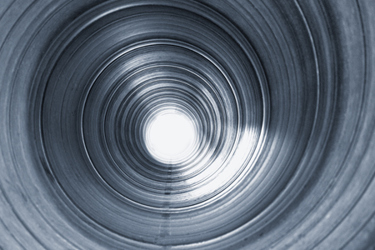How Much Energy Can Hydro Turbines In Water Pipes Generate?

By Emily Newton

As interest grows, real-world examples of energy generated within water pipes is confirming the viability of this innovative practice.
Hydro turbines are critical infrastructure components, creating energy from moving water. As people continue exploring feasible ways to reduce fossil fuel dependency, some wonder if they could make hydropower from drinking water. Combining an in-pipe hydro generator with existing water networks could become an energy-generation option.
How realistic is it for mini hydro turbines to become energy generators? Although this usage of water pipes is not widespread, more decision-makers are open to the idea, and some are testing it to learn more about the potential benefits and challenges.
Mini Hydro Turbines Succeed In Washington
Mount Vernon, Washington’s Skagit Public Utility District, has used an in-pipe hydro generator since 2020, allowing the organization to offset its pumping station costs. That decision has resulted in measurable payoffs. The system runs for about 20 hours daily, generating about 16-18 kilowatts of electricity.1
General Manager George Sidhu said this approach offsets about $1,000 in monthly utility costs, and the technology will pay for itself in about eight years. Plans are also underway to use hydropower from drinking water to support other energy needs in the surrounding area, including at a high school.
The Skagit Public Utility District uses a commercial solution from InPipe Energy, one of the main companies offering products in this space. Its product bypasses or replaces the pressure relief valves in all gravity-based and pressurized water systems. Those valves ensure the water from pumping stations or reservoirs is at the correct pressure for customers in homes and businesses to use it. InPipe Energy’s products use friction as a pressure regulator, along with a microturbine and in-pipe hydro generator. The turbine spins as water flows, powering a generator that creates electricity. These key components are also inside a box, making the installation process easy and quick.
InPipe Energy’s representatives can also take potential clients through a seven-step process of identifying their current infrastructure’s suitability for the technology and assessing how much energy they should expect to generate after installing it. Those details can help people make well-informed decisions and aid them in applying for grants.
Researchers Explore Getting Hydropower From Drinking Water
Some people have also examined how mini hydro turbines fit into net-zero energy strategies. Since the late 20th century, tidal power has emerged as an alternative energy source, deployed in countries including Scotland and Canada.2 It’s no surprise people have looked at other types of water-associated energy and tried to tap into them. After all, many innovations come from individuals willing to push the boundaries of what others thought possible.
In one case, researchers looked at how mini hydro turbines could become part of a university building’s net-zero energy in Pakistan.3 It was a 4,800-square-foot, three-story structure where most energy usage stemmed from passive heating and cooling systems.
The researchers proposed an in-pipe hydro generator based on a rooftop water tank supplying the entire university. This setup would have vertical pipelines running from the rooftop to the ground, with turbines installed 1 foot apart within that infrastructure.
The team planned to have 23 turbines per pipe, each with an effective head of 1 foot. They also incorporated noise dampeners around each pipe to compensate for the sounds generated as the system operated. Moreover, an energy management system supported the system’s cost-effective operations.
Calculations about the water reservoir’s height and the pipes’ diameters suggested the system would reach a maximum water discharge velocity of 10.45 meters per second and a flow rate of 230.9 liters per second. Experiments showed the system generated 168 watts of mechanical power when moving at 250 rotations per minute.
While exploring the methods of getting hydropower from drinking water, the researchers combined their in-pipe turbines with a solar power system. They found the two components collectively gave the best energy-generation results.
Many people don’t consider hydropower a renewable energy source, even outside Pakistan. For example, it accounts for approximately 7% of the power generated in the U.S., although there’s more work to do in adopting it.4 However, experiments like this one show the potential of integrating it into existing buildings, supporting other energy-saving initiatives. Such results could encourage people to be more open-minded about the possibilities.
California Municipality Chooses In-Pipe Hydro Generator
In California, representatives from the East Bay Municipal Utility District (EBMUD) became interested in whether mini hydro turbines could replace an existing water pressure regulator while simultaneously generating electricity for the area.
Estimates suggested using it could generate approximately 130,000 kilowatt-hours of electricity per year.5 Additionally, the system should offset almost 6 metric tons of carbon dioxide emissions, helping EBMUD achieve its aspirations of becoming carbon neutral by 2030.
Since 2000, EBMUD has gradually cut its carbon emissions through various efforts. Those include hydropower reliance, plus biogas, solar energy, and efficiency upgrades through improved or replaced equipment. However, EBMUD’s board members liked how this in-pipe hydro generator would support the municipality’s dual mission of cutting emissions while providing clean water for its 1.4 million customers.
This case study proves people can pursue multiple aims using mini hydro turbines. That reality could make decision-makers more open to these options, showing they’re worth the money and effort to install. When interested parties can show data suggesting the technology will meet several goals, it should be easier for them to acquire funding and approval to move forward.
Similarly, once other leaders see good results from parties pioneering the use of in-pipe hydro generator solutions, they’ll become motivated to explore those options, too. Once that happens, there will be a collective push toward viewing hydropower as a viable energy source. Plus, putting the turbines inside existing pipes is a space-saving possibility that should keep costs down.
Irish Startup Examines the Potential of Mini Hydro Turbines
Sometimes, efforts to get hydropower from drinking water occur after those involved have been on significant, relevant journeys that helped them reach that point. Such was the case with Easy Hydro, an Irish startup launched by Dr. Daniele Novara.6 Following his university education in energy management, business, and energy engineering, Dr. Novara was selected along with six others to participate in a European Commission-hosted hydropower workshop.
That event helped Dr. Novara learn about recent innovations, ultimately informing his decision to create the startup. Easy Hydro’s solutions stand out because they’re off-the-shelf products that do not require a water reservoir to work.
Novara pointed out that getting hydropower from drinking water is an excellent energy recovery method because excess pressure generally dissipates as heat and noise. Capturing it for energy generation is a practical, eco-friendly possibility. The ideal customers for Easy Hydro’s technology are water-intensive sectors, such as food processing, irrigation, and mining. All those already have extensive pipe networks well-suited for adding miniature turbines.
The Easy Hydro system generates up to 600 kilowatts of energy, or enough to cover the needs of 300 households. When exploring the potential for getting hydropower from drinking water within the European Union alone, Novara said his company’s solution could create 2 gigawatts of energy if installed within all pipes. That’s the equivalent of a large nuclear power station.
The company’s solution relies on standard water pipes operating in reverse mode. Novara said his turbines are less expensive and easier to maintain than standard ones. Plus, the system is easy to scale, opening possibilities for installing several throughout a chosen area.
Treating Water Pipes As Energy Generators
These real-world examples show plenty of potential for installing mini turbines inside existing water pipes. Such evidence will be critical in raising people’s confidence in this newer technology, showing how such investments can pay off and become part of renewable energy and emissions-reduction plans.
References:
- https://www.enr.com/articles/56240-mini-hydroturbines-in-water-pipes-gaintraction-for-clean-energy
- https://revolutionized.com/what-are-tidal-energy-farms
- https://www.ncbi.nlm.nih.gov/pmc/articles/PMC8662452/
- https://www.meco.com/water-powering-world/
- https://www.hydroreview.com/hydro-industry-news/small-hydro/ebmudpilot-program-generates-clean-energy-from-water-pressure-in-pipelines/
- https://www.siliconrepublic.com/start-ups/easy-hydro-trinity-spin-out-waterturbines-renewable-energy
 About The Author
About The Author
Emily Newton is an industrial journalist. She regularly covers stories for the utilities and energy sectors. Emily is also editor in chief of Revolutionized (revolutionized.com).
